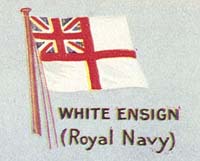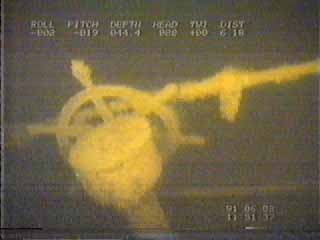The sinkings of E-9
 During
World War I, as well as during W.W.II, the iron trade from Sweden to Germany was vital for Germany. The
British Royal Navy tried hard to stop this. Finally, in September 1915, British subs successfully
passed into the Baltic Sea. On 11 October 1915, E-19 sank four German
ships in a single day.
During
World War I, as well as during W.W.II, the iron trade from Sweden to Germany was vital for Germany. The
British Royal Navy tried hard to stop this. Finally, in September 1915, British subs successfully
passed into the Baltic Sea. On 11 October 1915, E-19 sank four German
ships in a single day.
Submarine E-9
Just a week later the British sub E-9, commanded by Max Horton, was equally successful. He waited for passing-by prey between Landsort and Häradskär, south of the Stockholm archipelago. During 18 and 19 October, E-9 intercepted four German steamers. Each ship was hailed on international water. After inspection a decision was made to sink her, and the crew was given time to enter the lifeboats.
Soederhamn
This was the first on the evening of 18 October. Soederhamn carried a cargo of Swedish wood. Despite setting off explosives in the engine room and having opened the bottom valves, this ship refused to sink. Apparently it floated on the cargo. E-9 finally gave up, the crew returned onboard, and managed to take the ship to the port of Oxelösund!
Pernambuco
This ship was also sunk on the evening of 18 October.
Johannes Russ
Johannes Russ was caught by E-9 in the morning of 19 October. This ship carried coal destined for Sundsvall in north Sweden. She was stopped on international water, so after inspection a decision was made to sink it, and the crew was given time to enter the lifeboats. For some reason this ship refused to sink, and was left drifting.
The Swedish navy destroyer Wale arrived, taking the German crew onboard. Then Wale rushed to the steamer Dalälfven (below) that was already under attack by E-9. Once there, the British commander ordered the Swedish warship to stay away. "We are on international water and I am going to sink this ship". The Swedes obliged, rescued the German crew, and returned towards land.
They found that Johannes Russ was still floating, so they started towing the ship towards land. Later, a Swedish tugboat arrived and took over the tow towards land. But suddenly there was an explosion onboard and the steamer started to sink quickly. The tugboat had to cut the tow quickly to avoid being pulled down. In 1984 she was rediscovered. Read about the discovery.
Dalälfven
This steamer from Hamburg was loaded with coal headed for Swedish port Gävle. It was the last ship caught by E-9. After the initial difficulties, and after arguing with the Swedish destroyer, commander Horton decided to use one of the expensive torpedoes for sinking. The ship sank as intended 10.30 AM and the crew was rescued by the destroyer Wale.
Per Åkesson, March 2000
Related texts
Related link
- WW1 British Submarines (sometimes bad connection)
Sources
- H. Lindblad: Rapport över jagarens Wales patrullering den 19 och 20 okt 1915 (Krigsarkivet, Chefen för kustflottan, Hemliga arkivet, Stabsexp Serie EI:4 1915)
- Norrköpings Tidning 19 October 1915
- Göterborgs Aftonblad 20 October 1915
- Smålands Allehanda 21 October 1915
- Dagens Nyheter 21 October 1915
- Nya Dagligt Allehanda, 25 October 1915
- Michael Wilson: Baltic Assignment
- Per-Olof Ekman: Havsvargar (Schildts, 1983)
- Research and oral information by Sture Hultquist

 Back to Nordic Underwater Archaeology
Back to Nordic Underwater Archaeology